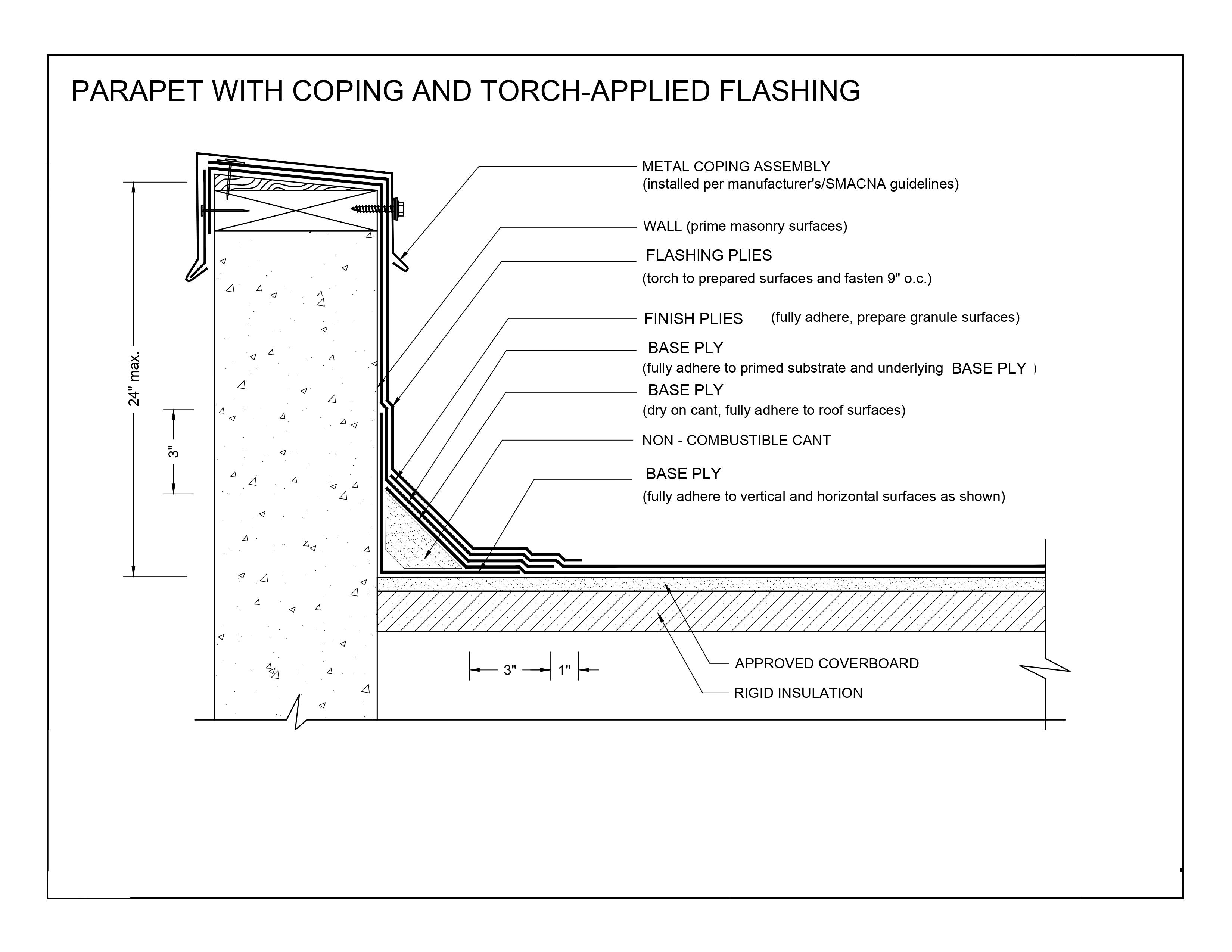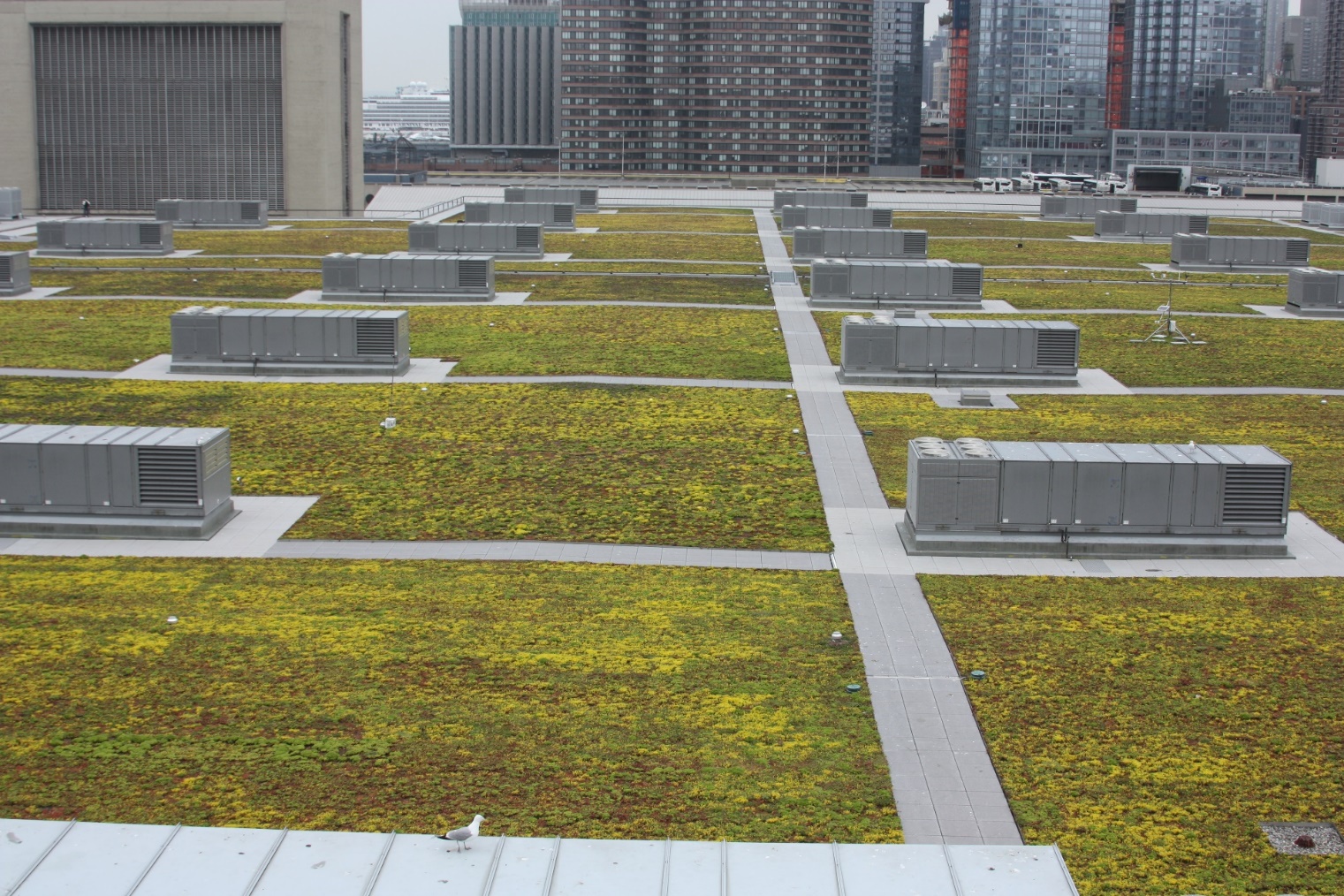Durability From a Timeless Product
Detailing and repair
As with the vast majority of roof systems, transition details can be done with materials of a technology similar to the roof material itself. For example, an SBS system can be specified to use an SBS flashing sheet with a granule surfacing to match the rest of the roof or an unsurfaced flashing sheet. For parapets (Figure 13), transition flashing typically uses 3-4 layers at the 90-degree bend, typically uses a cant strip, and has at least 2 layers up the vertical wall. Additionally, there are asphaltic backed foil surfaced flashing options available. The foil surfaced flashing option, when used on parapets and edge details, can direct heat away from the wall edge, potentially reducing the amount of movement at the roof-to-wall interface.

Image courtesy GAF/Siplast
Figure 13. Parapet detailing and transition flashing.











